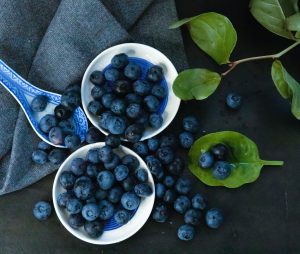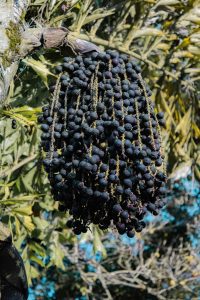
What Is a Lemon?
A lemon is a vibrant and tangy citrus fruit scientifically known as Citrus limon, belonging to the Rutaceae family. Recognized for its yellow hue and distinctive sour flavor, lemons are widely cultivated for both culinary and non-culinary purposes.
The fruit typically features a smooth, bright yellow peel with an aromatic zest, while its interior consists of segmented, juicy pulp containing seeds. Lemons are renowned for their high vitamin C content, providing a boost to the immune system. They are a versatile ingredient, enhancing the flavors of numerous dishes, beverages, and desserts.
Lemon juice, with its acidity, is a common component in dressings, marinades, and refreshing beverages like lemonade. Additionally, the zest is utilized for its aromatic essence in various culinary applications. Beyond the kitchen, lemons find use in household cleaning products and aromatherapy, showcasing their multifaceted significance in both culinary and non-culinary realms.
Why Do We Eat Lemons?
We eat lemons for various reasons, driven by their unique and tangy flavor, as well as their nutritional and versatile qualities:
- Flavor Enhancement:
- Lemons add a bright and refreshing tang to a wide range of dishes, enhancing the overall flavor of both sweet and savory recipes.
- Vitamin C Boost:
- Lemons are rich in vitamin C, an essential nutrient that supports the immune system, promotes skin health, and aids in the absorption of iron.
- Acidity in Culinary Use:
- The acidic nature of lemon juice makes it a valuable ingredient in cooking and baking. It can be used to tenderize meat, prevent browning of fruits, and act as a leavening agent in certain recipes.
- Beverages:
- Lemon juice is a key ingredient in popular beverages such as lemonade, providing a refreshing and thirst-quenching option, especially during hot weather.
- Salad Dressings:
- Lemon juice is commonly used in salad dressings, contributing a zesty and citrusy flavor to salads.
- Marinades:
- The acidity of lemon juice makes it an excellent component in marinades, helping to impart flavor and tenderize meats.
- Desserts:
- Lemons are a staple in dessert recipes, including pies, cakes, and sorbets, where their tartness balances sweetness.
- Hydration:
- Adding a slice of lemon to water can make it more palatable, encouraging increased water intake and hydration.
- Culinary Versatility:
- Lemons are versatile in the kitchen, used in both sweet and savory dishes, sauces, condiments, and as a garnish.
- Aromatherapy and Cleaning:
- The aromatic zest of lemons is used for its pleasant scent in aromatherapy. Lemon juice is also a natural cleaning agent due to its antibacterial properties.
In summary, eating lemons adds a burst of flavor to various dishes, provides essential nutrients, and offers a versatile ingredient in culinary creations and beyond.
When Do We Eat Lemons?
Lemons are consumed in various forms and at different times, depending on personal preferences and culinary applications. Here are common occasions when people eat lemons:
- As a Flavorful Garnish:
- Lemon wedges or slices are often used as a garnish for dishes, providing a burst of citrus flavor. They are commonly added to seafood, salads, and beverages.
- In Beverages:
- Lemon juice is a popular addition to beverages such as water, tea, and lemonade. It adds a refreshing and tangy taste to these drinks.
- In Culinary Creations:
- Lemons are used in cooking and baking to enhance the flavor of dishes. Lemon juice and zest can be incorporated into sauces, dressings, marinades, desserts, and savory recipes.
- As a Snack:
- Some people enjoy eating slices of lemon on their own, sprinkled with a bit of salt or sugar. However, due to their tartness, this is not as common as other methods of consumption.
- In Desserts:
- Lemons are a key ingredient in various desserts, including lemon pies, cakes, tarts, sorbets, and cookies, providing a delightful and citrusy flavor.
- In Salad Dressings:
- Lemon juice is frequently used to make salad dressings, contributing acidity and brightness to salads.
- As a Hydration Enhancer:
- Adding lemon slices to water can enhance its flavor, encouraging increased water intake and hydration.
- In Marinades:
- Lemon juice is often included in marinades for meats, fish, and poultry. The acidity helps tenderize and flavor the food.
- As a Condiment:
- Lemon zest and juice are used as condiments to add zing to a variety of dishes, from grilled vegetables to pasta.
- For Aromatherapy:
- The scent of lemons is used in aromatherapy for its uplifting and invigorating properties. Some people enjoy the aroma of lemon while consuming foods containing lemon zest or juice.
Overall, lemons are a versatile ingredient enjoyed in both sweet and savory dishes, as well as in various beverages, making them a valuable addition to a wide range of culinary experiences.
Ingredients of Lemons
Lemons, being a natural fruit, don’t have an extensive list of ingredients. Instead, they consist of various components that contribute to their distinctive flavor and nutritional profile. Here are the main elements found in lemons:
- Water:
- Lemons have a high water content, contributing to their juiciness and refreshing nature.
- Citric Acid:
- Lemons are rich in citric acid, which gives them their tart and tangy flavor. Citric acid also acts as a natural preservative.
- Natural Sugars:
- Lemons contain natural sugars, primarily fructose, which provide a subtle sweetness to balance their tartness.
- Vitamins:
- Lemons are an excellent source of vitamin C, an antioxidant that supports the immune system and promotes skin health. They also contain small amounts of other vitamins, including B vitamins.
- Minerals:
- Lemons provide minerals such as potassium, which is essential for maintaining proper fluid balance and supporting heart health.
- Dietary Fiber:
- While not particularly high in fiber, lemons do contribute some dietary fiber, which aids in digestion.
- Antioxidants:
- Lemons contain various antioxidants, including flavonoids, which help neutralize free radicals in the body.
It’s important to note that the specific nutritional content can vary slightly depending on factors such as the size and ripeness of the lemon. Consuming lemons in their natural state allows you to benefit from their nutritious components without any additional ingredients.
Types of Lemons
There are several varieties of lemons, each with its own unique characteristics in terms of flavor, size, and appearance. Here are some common types of lemons:
- Eureka Lemon (Citrus limon ‘Eureka’):
- One of the most widely available varieties, Eureka lemons are medium to large in size, with a bright yellow color and a tart, tangy flavor. They have a smooth skin and are commonly used for culinary purposes.
- Lisbon Lemon (Citrus limon ‘Lisbon’):
- Similar to Eureka lemons, Lisbon lemons are another common variety with a bright yellow color and a tangy taste. They are often used in cooking, baking, and for making lemonade.
- Meyer Lemon (Citrus × meyeri):
- Meyer lemons are a sweeter and less acidic variety. They have a thin, smooth, deep yellow to orange skin and are often used in desserts, cocktails, and for preserving.
- Ponderosa Lemon (Citrus limon × medica):
- Ponderosa lemons are large and have a thick, bumpy skin. They are less common than other varieties and are known for their mild, slightly sweet flavor.
- Lemonade Lemon (Citrus limon ‘Lemonade’):
- This variety is a cross between a lemon and a mandarin orange, resulting in a sweet and less acidic taste. Lemonade lemons have a thin, smooth skin and are commonly used for making lemonade.
- Villafranca Lemon (Citrus limon ‘Villafranca’):
- Originating from Italy, Villafranca lemons are known for their elongated shape and a distinct, strong lemon flavor. They are often used in cooking and for making beverages.
- Femminello Ovale Lemon:
- This Italian lemon variety is widely grown for its high juice content and tangy flavor. It is commonly used in culinary applications and for making lemon-flavored products.
- Primofiori Lemon:
- Primofiori lemons are a Spanish variety known for their high juice content, intense aroma, and a well-balanced sweet-tart flavor. They are often used in both culinary and non-culinary applications.
These are just a few examples of the many lemon varieties available. The specific types may vary by region, and each offers a unique taste and texture for culinary enjoyment.
Signs of Ripe, Signs of Raw and Signs of Rotten Lemons
Signs of Ripe Lemons:
- Color:
- Ripe lemons typically have a bright yellow color. However, some varieties may have a slight greenish tinge even when ripe.
- Firmness:
- Ripe lemons should feel firm and heavy for their size. They should give slightly to gentle pressure but not be overly soft.
- Smooth Skin:
- The skin of a ripe lemon should be smooth and free of major blemishes. Some natural variations in texture are normal.
- Aroma:
- Ripe lemons often have a fragrant citrus aroma. This can be more noticeable when you gently press the skin, releasing the essential oils.
- Weight:
- A ripe lemon feels heavy for its size, indicating a juicy interior.
Signs of Raw or Unripe Lemons:
- Color:
- Unripe lemons may have a greenish hue or uneven coloring. They might lack the vibrant yellow color associated with ripeness.
- Hardness:
- Unripe lemons are usually hard to the touch and may not give much when gently pressed.
- Dull Skin:
- The skin of unripe lemons might appear dull and less glossy than that of ripe lemons.
- Lack of Aroma:
- Unripe lemons may not have a strong citrus aroma when the skin is gently pressed.
Signs of Rotten Lemons:
- Foul Odor:
- Rotten lemons emit a foul or fermented smell. This is often noticeable when you cut into the lemon.
- Mold:
- Visible mold on the skin or within the flesh is a clear sign of spoilage.
- Soft or Mushy Texture:
- Rotten lemons will feel soft or mushy to the touch. Pressing on the skin may result in a noticeable indentation.
- Discoloration:
- Dark or off-color patches on the skin or flesh can indicate rotting or deterioration.
- Leaking Liquid:
- Any liquid oozing from the lemon is a sign of internal breakdown and spoilage.
Checking these signs will help you select lemons at their peak ripeness for the best flavor and quality.
Summary
In summary, lemons are citrus fruits known for their vibrant yellow color, tangy flavor, and versatile uses. Varieties such as Eureka, Lisbon, and Meyer offer distinct taste profiles.
Ripe lemons exhibit a bright yellow color, firmness, smooth skin, citrus aroma, and a heavy feel. Unripe lemons may have a greenish hue, hardness, and a lack of the characteristic aroma. Rotten lemons emit a foul odor, show visible mold, have a soft texture, discoloration, and may leak liquid.
Widely utilized in culinary applications, lemons enhance the flavor of dishes, beverages, and desserts. They are prized for their high vitamin C content, citric acid, and antioxidants, contributing to immune support and overall health.
From salad dressings to refreshing beverages like lemonade, lemons play a vital role in both savory and sweet culinary creations, making them a beloved and essential ingredient.






